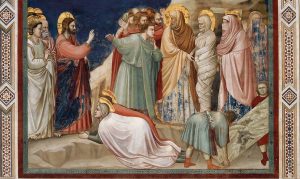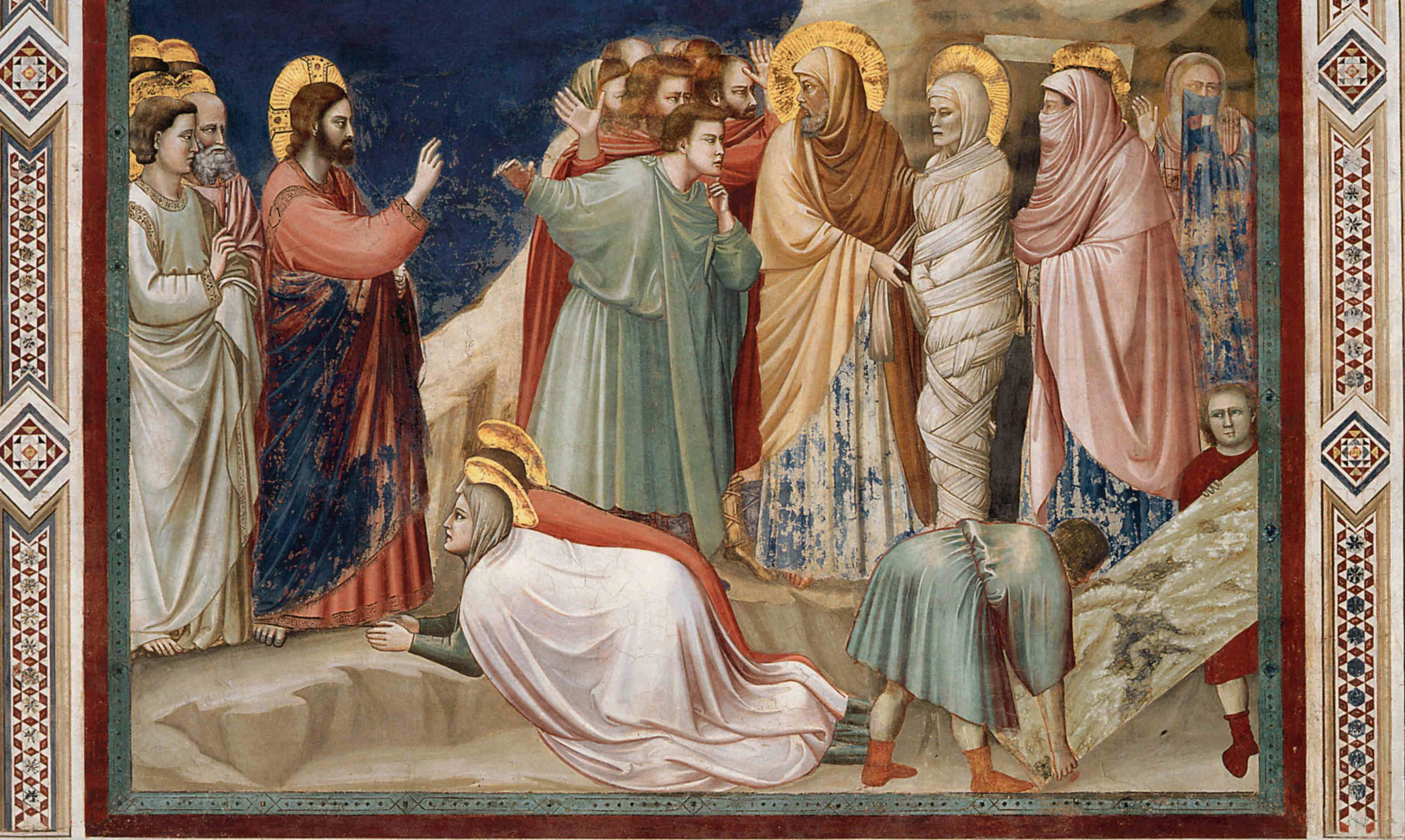Calling Christ a drag queen pedophile shows what’s wrong with academia
An academic article calling Christ a queer, pedophile drag queen reveals that modern academics know nothing about anything — and then teach it to our kids.
 I finally got around to reading the article about Holy Cross College professor Tat-Siong Benny Liew, who has some interesting ideas about Jesus Christ (whose resurrection Christians around the world celebrate today). Before getting to Liew’s theories, you need to know that he’s not just any professor who’s randomly dabbling in religious analysis. Instead, he’s someone with rigorous training and expertise in Christian religious studies:
I finally got around to reading the article about Holy Cross College professor Tat-Siong Benny Liew, who has some interesting ideas about Jesus Christ (whose resurrection Christians around the world celebrate today). Before getting to Liew’s theories, you need to know that he’s not just any professor who’s randomly dabbling in religious analysis. Instead, he’s someone with rigorous training and expertise in Christian religious studies:
Professor Tat-siong Benny Liew received bachelor’s and master’s degrees from Olivet Nazarene University and completed his doctorate at Vanderbilt University. Prior to his appointment at Holy Cross, Professor Liew had been Professor of New Testament at the Pacific School of Theology, and before that taught at Chicago Theological Seminary. According to the Department of Religious Studies webpage, his fields of specialty include “synoptic gospels, gospel of John, cultural and racial interpretations and receptions of the Bible, apocalypticism, and Asian American history and literature.” [Footnotes omitted.]
Those are some serious academic chops. Clearly, if Liew opines about Christianity, we should give him deference, right? Welllllll . . . maybe not.
The above-linked, much-shared article, exposes the theories Liew has been promoting in academic publications. For Liew, identifying Christ as a Jew, a rabbi, a profound moralist, and (if you’re Christian) the Son of God and Man’s savior, is old hat. It’s time for some new thinking about Christ:
The 2004 article “Mistaken Identities but Model Faith: Rereading the Centurion, the Chap, and the Christ in Matthew 8:5-13,” provides a representative example. Professor Liew and his co-author, Theodore Jennings, argue that Matthew 8:5-13, the story of the centurion who goes to Jesus to ask for healing for his servant, ought to be interpreted in terms of a sexual relationship. Matthew’s account, runs the argument, does not concern a centurion and his servant, but a centurion and his lover/slave. “The centurion’s rhetoric about not being ‘worthy’ of a house visit by Jesus (8:8) may be the centurion’s way of avoiding an anticipated ‘usurpation’ of his current boylove on the part of his new patron [Jesus],” they assert. Furthermore, “The way Matthew’s Jesus seems to affirm the centurion’s pederastic relationship with his παῖς, we contend, may also be consistent with Matthew’s affirmation of many sexual dissidents in her Gospel.” [Footnote omitted.]
Yes, says Liew, Christ is a gay pederast. But wait, folks, there’s more!
. . . . Professor Liew explains that he believes Christ could be considered a “drag king” or cross-dresser. “If one follows the trajectory of the Wisdom/Word or Sophia/Jesus (con)figuration, what we have in John’s Jesus is not only a “king of Israel” (1:49; 12:13– 15) or “king of the Ioudaioi” (18:33, 39; 19:3, 14– 15, 19– 22), but also a drag king (6:15; 18:37; 19:12),” he claims. He later argues that “[Christ] ends up appearing as a drag-kingly bride in his passion.” [Footnotes omitted.]
Gay pedophile cross-dressing Christ! Appearing soon at a sex show near you!!!
But why stop with that, if you’re Liew? In today’s LGBTQRSTUV etc. world, there are many more labels that can be attached to Christianity’s savior:
Professor Liew continues:
In addition, we find Jesus disrobing and rerobing in the episode that marks Jesus’ focus on the disciples with the coming of his ‘hour’ (13:3– 5, 12). This disrobing, as [Colleen] Conway points out, does not disclose anything about Jesus’ anatomy. Instead, it describes Jesus washing his disciples’ feet. As more than one commentator has pointed out, foot-washing was generally only done by Jewish women or non-Jewish slaves. 12 John is clear that Jesus is an Ioudaios (4:9, 22; 18:33– 35; 19:40); what John is less clear about is whether Jesus is a biological male. Like a literary striptease, this episode is suggestive, even seductive; it shows and withholds at the same time.
Professor Liew asserts that Jesus’s “excessive” and “deceptive” speech would be considered “feminine” in the culture of the time. In defense of this claim, he states that in Greco-Roman culture:
Women pollute since their moist and soft nature is also more susceptible to the assaults of wanton desires, erotic or otherwise. In short, women are wet and (thus) wild. I am suggesting that John’s constant references to Jesus wanting water (4:7; 19:28), giving water (6:35), and leaking water (19:34) speak to Jesus’ gender indeterminacy and hence his cross-dressing and other queer desires…
He clarifies that he is not suggesting that Christ is actually a woman, but that he is neither male nor female. “I want to suggest that John’s crossdressing Jesus shows that a so-called ‘core’ is but a(n significant) effect of bodily acts,” he writes. [Footnotes omitted.]
I’m not going to use this post to assert the obvious, which is that Christ is not a gay, pedophile, cross-dressing, gender queer drag queen. I think the Biblical text is pretty clear about the fact that Christ is nothing of the sort.
Nor am I going to go on my usual rant about the fact that, just as to a hammer everything is a nail, it’s also true that, to people who group themselves on the LQBTQRSTUV est. spectrum, everything is about that spectrum.* (Lincoln was gay! Norman Rockwell was gay! Superman is probably gay too, because his heroic actions and longing glances weren’t for Lois Lane at all, but were instead subtle 1940s and 1950s closeted posturing actually meant for the young, delectable Jimmy Olsen.)
Instead, what I want to challenge in this article is the mushbrained gobbledy-gook that lets academics get away with spouting the worst kind of crap, all of it unconnected to facts and intelligent analysis. This meaningless deconstructionism is endemic in the liberal arts. Cut through the fancy words and you see ignorant people incapable of logical thought.
I’m not a rube, so I know that the historic world was rife with symbolic shorthand. In a time in which producing words or images was labor intensive, when many people were illiterate, and when relationships between the sexes were restrained, symbolic iconography was important. Take for example this beautiful Van Eyck Annunciation:
That dove dive-bombing the Virgin Mary is not a threat. (Trigger warning! Trigger warning! Mad bird!) It is, instead, the Holy Spirit entering her. Medieval people knew that when they looked at the picture.
Likewise, in the 18th century, everyone looking at Jean Baptiste Greuze’s shlocky The Broken Pitcher understood that the broken pitcher and disordered décolletage meant the sad-looking girl had lost her virginity (presumably to some toxic white male in her own #MeToo moment):
Heck, by the Victorian era, there were whole books explaining the language of flowers or the messages behind a woman’s use of her fan.
Literature too was rife with symbolism. I remember many painful hours in high school and college English classes slogging through books that would otherwise have been enjoyable reading, in an endless search for any descriptive language that could be understood to send a symbolic message to the reader. Indeed, in that vein, I’ve never quite recovered from an “oral rhetoric” class I took at Cal.
Why it was called “oral rhetoric” I do not know, because there was nothing “oral” or “rhetorical” about it. Instead, an exceptionally arrogant grad student dragged us through 19th and 20th century novels and essays, requiring that we engage in the stock symbolic analysis we’d done in every other English class. Really, the only thing that distinguished this class from others I took at Cal was that the grad student hated me because I challenged him on everything.
I didn’t mean to be so obstinate. Indeed, I’ve always been a very agreeable student. What I didn’t realize at the time, but figured out in retrospect, was that he was already then, in the early 1980s, putting a Marxist, identity politics spin on this literature, and it fit about as badly as a cobra in a tutu. That pinged my bullcrap meter.
I also found the grad student’s picking apart every word in the text (any text) to find symbolic meaning strained. Had I been familiar with the apocryphal saying attributed to Freud, I would have told him “sometimes a cigar is just a cigar.”
The novel that really drove the grad student mad with his search for symbolism was Oscar Wilde’s Picture of Dorian Gray. He was particularly obsessed with floral symbolism, as teachers still are today:
Setting the scene/tone of the entire novel using flowers- Oscar Wilde sprinkled floral imagery and symbolism cleverly throughout the novel. One very noticeable and significant use of floral imagery would be in the opening chapter. The very first sentence of the novel is lush and filled with sensory imagery. “The studio was filled with the rich odor of roses, and when the light summer wind stirred amidst the trees of the garden, there came through the open door the heavy scent of the lilac, or the more delicate perfume of the pink-flowering thorn” (Wilde 3). Wilde focused on the flowers even in the first sentence to depict the dream-like state of the novel. This enhances the idea that Gray will indulge in his senses as sensory imagery hits the reader immediately. Flowers were more often then not, symbolic of a deeper meaning, and their use cannot be disregarded. Though flowers are usually innocent, they can be harmful in many ways. Even the way the sentence is structured is flowery. Before every piece of floral imagery, Wilde uses the phrase “of the”. This helps with the rhythm of the sentence by increasing the length of each phrase.
What’s fascinating about the above analysis, and what was equally fascinating about that Cal grad student, was that these Marxist Leftist analyzers never bother to investigate the actual Victorian texts spelling out what each flower symbolized (rosemary for remembrance, red roses for Christ’s blood or romance, mimosa for chastity, etc.). Even in a pre-internet age, you could find that information pretty easily in the campus library.
Instead as, you see above (and what that grad student taught), this is all airy fairy stuff that anyone can make up as they go along: flowers smell good, flowers die, flowers bloom, flowers get cut, blah, blah, blah. It’s quick, cheap analysis that may have had little to do with Wilde’s late-Victorian understanding of actual floral symbolism.
But back to that class that scarred me. About the only thing “oral” about the “oral rhetoric” was that we had to read our papers aloud. So it was that one student wrote and read an earnest paper entitled The Phallic Symbolism of Female Sexual Organs as Seen Through Oscar Wilde’s Use of Floral Imagery. I no longer remember the details, but you can imagine what an essay with that title said.
If I could have peered into the future on that day, I would have realized that I was on the cusp of the fluid gender, transgender, transexual revolution. I had no crystal ball, though. All I knew was that the student was writing (and reciting) nonsense.
Now, I am not normally a cruel person and I do not like humiliating people in public (or in private). Still, I could not stop myself from laughing. I tried coughing, I tried dropping and picking up pencils, I tried thinking sad thoughts, but the giggles just kept leaking out. That was rude and the teacher properly scolded me.
But where the teacher failed utterly was that he never corrected that steaming pile of floral-scented gender confused poop the student dropped that day in a Cal classroom. Instead, he left that student, and everyone else in the class but for me, believing that it made sense to opine “learnedly” about The Phallic Symbolism of Female Sexual Organs as Seen Through Oscar Wilde’s Use of Floral Imagery.
Incidentally, the teacher got his revenge. He gave me a B-, which left me a magna, rather than a summa cum laude graduate. I’m still teed off about that more than three decades later. 😉
All of which gets me back to the loathsome pile of bullcrap that Professor Liew has recently heaped upon the New Testament. Although I’m not versed in symbolism in Gospels, I know as surely as I know that the earth is round, that the symbolism is tied tightly to the place (Jewish Palestine) and time (in the first 150 years after Christ’s birth) in which the Gospels were written. And I can tell you with equal assurance that Jewish citizens in Roman Palestine, circa 33 A.D. to 150 A.D. were not thinking along the following lines:
Women pollute since their moist and soft nature is also more susceptible to the assaults of wanton desires, erotic or otherwise. In short, women are wet and (thus) wild. I am suggesting that John’s constant references to Jesus wanting water (4:7; 19:28), giving water (6:35), and leaking water (19:34) speak to Jesus’ gender indeterminacy and hence his cross-dressing and other queer desires…
Let’s ignore the misogyny there (i.e., “women pollute”). Instead, let’s focus on Liew’s premise about the feminine sexual of water. That’s all very 20th and 21st century, deconstructionist and post-deconstructionist, literary analysis thinking but it’s not 1st century AD Judea thinking.
If I had to take a wild stab at the water imagery in the Gospels, I wouldn’t think sex, I would think “desert climate.” More than in any other place in the world, in the desert water is life. Assuming there’s meaning behind those water references, it was because Christ was a giver of life. (See, e.g., Lazarus at John 11:1-44; Jairus’ daughter at Matthew 9:18-26, Mark 5:21-43 and Luke 8:40-56; and the widow’s son at Nain at Luke 7:11-17.) Life, not sex, is the more informed and logical way to look at the words.
Precisely the same common sense argument applies to Liew’s effort to find gay subtexts in 1st century religious writing in the Jewish land of Palestine:
The 2004 article “Mistaken Identities but Model Faith: Rereading the Centurion, the Chap, and the Christ in Matthew 8:5-13,” provides a representative example. Professor Liew and his co-author, Theodore Jennings, argue that Matthew 8:5-13, the story of the centurion who goes to Jesus to ask for healing for his servant, ought to be interpreted in terms of a sexual relationship. Matthew’s account, runs the argument, does not concern a centurion and his servant, but a centurion and his lover/slave. “The centurion’s rhetoric about not being ‘worthy’ of a house visit by Jesus (8:8) may be the centurion’s way of avoiding an anticipated ‘usurpation’ of his current boylove on the part of his new patron [Jesus],” they assert. Furthermore, “The way Matthew’s Jesus seems to affirm the centurion’s pederastic relationship with his παῖς, we contend, may also be consistent with Matthew’s affirmation of many sexual dissidents in her Gospel.” [Footnote omitted; emphasis added.]
Again, it takes an enormous leap to look at straightforward language about life in 1st century Jewish Palestine, when soldiers had servants, and spin out a whole gay, pedophile narrative, with Christ as the sexual gay predator. Indeed, even Liew and Jennings don’t believe what they’re saying, as you can see from all the hedging language they used (which I highlighted). They are making this up as they go along.
You know, if you’re a gay, queer, transgender person with pedophile instincts, I can accept that you’re going to try to bend the world to your personal reality. I don’t think you ought to, because the world isn’t built around your very small subset of sexual variations, but I get that you’re going to do it. Nevertheless, making your arguments based upon this kind of ill-informed, meaningless, make-it-up-as-you-go-along academic gobbledygook is the equivalent of you peeing on my leg and earnestly assuring me, with polysyllabic words and lots of citations to equally ludicrous authority, that it’s raining.
As my experience at Cal so long ago shows, Professor Liew’s ignorance, posturing, and complete divorce from real-world, rational analysis, is nothing new. It’s just much worse than it’s been before.
Also — and this is what makes it scary, not just silly — is the fact that it has been and still is infecting generations of young people who move on to leadership positions in America, whether in academia, the media, K-12 education Hollywood, or the corporate world. If you’re wondering why companies are getting in line behind David Hogg’s call to boycott Laura Ingraham, it’s because he’s speaking the same language the college-educated corporate executives have learned for two generations now: fact-free, identity politics with a heavy dose of hysteria, bullying, and America hatred. (By the way, if you want to fight back against Leftist corporate culture, check out What Business Thinks, a database that helps you know where businesses stand on the hot issues of today.)
___________________
*To toot my horn, before I linked to it, I went back and read my article about the push to make all historic figures gay. Seeing it from a distance of five years, I couldn’t help but think that what I said then really does merit reading now in connection with where our culture was and where it’s going.
*****




